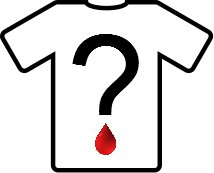Watching coverage of the Rana Plaza factory collapse outside Dhaka, Bangladesh, in April 2013 was a startling wake-up call for many. As the death toll crept up to over 1,100, finger-pointing and calls for change ran rampant, but the process for preventing similar tragedies is still unclear.
Responsibility for worker safety is passed around like a hot potato, from big brands to government to business owners and on down the line. Individual consumers may question their role in this tangled mess. We wonder: Is there some small thing I can do to make a difference?
While the Rana Plaza collapse now ranks among the worst industrial disasters the world has seen, it was not an isolated incident.
The Clean Clothes Campaign (CCC) has been striving to improve “working conditions and supporting the empowerment of workers in the global garment and sportswear industries” since 1989.
In a briefing on safety in the garment industry—which was released five months prior to the Rana Plaza collapse—the CCC highlights some of the safety procedures that have been put in place, and the failings of the audit systems designed to maintain them in a garment industry with one of the worst safety records in the world.
“According to the Bangladesh Fire Department, 414 garment workers were killed in at least 213 factory fires between the years 2006 and 2009. A further 79 workers lost their lives in 2010 in 21 separate recorded incidents.”
Despite their attempts to better the situation, it was obvious that progress in 2012 was slow. The CCC noted that “there has been a lot of talk and very little action. More meetings where everyone blames each other [ . . . ] will not achieve anything.”
And what good are talks without all of the players at the table? Retail brands have a scattered record of attending these meetings or signing agreements.
Some rabble-rousers in the media have adopted the tactic of naming and shaming retailers, such as Wal-Mart, who have refused to pay lip service to bettering the situation, though their labels were found in the rubble of Rana Plaza (Wal-Mart blames rogue subcontractors for—and maintains they were unaware about—their brands’ presence).
Whether they own their role or not, retailers’ very presence in manufacturing centres such as Dhaka makes them part of the problem.
“It is clear that the decisions of brands and retailers to seek low cost, unregulated environments in which to carry out production has contributed to a situation where workers’ lives are being placed at risk,” states the CCC.
Yet in the court of public opinion, those who have taken small steps towards offering compensation to those injured in similarly tragic events, or who have signed on to agreements to improve safety, such as Joe Fresh, are held up as better examples of corporate citizenry.
So, what is the individual consumer to make of all of this, besides offering up a golf clap and their patronage to “good” retailers, and turning their back on the “bad?”
In a piece posted on Al Jazeera’s website, writer Karen Coates acknowledges “there is no simple fix.”
“It’s an age-old dilemma that goes round and round: Factories don’t pay more because international buyers pay the same, no matter how much the labourers earn. If international buyers raised their rates, they’d pass the increase onto Western consumers,” says Coates.
Enter the question of ethical consumption. Are consumers willing to pay more for clothing with a cleaner, safer trail behind it?
Studies on consumer behaviour yield conflicting and varied results. Some report that people are more focused on low prices than ethical production, while others note that there is a greater demand for information and accountability by consumers.
The language of a democratic system is often transposed onto consumerism: your dollar, your vote. Ethical buying guides advise the public: “Money is a vote which you can use every time you go shopping. By using your spending power wisely you can help in the struggle towards a better world.”
The democratic comparison falls apart when we examine who holds these consumer votes. People struggling to survive on minimum wage will have a harder time paying for ethically produced items, and the discount-dependent working poor have much fewer retail options than the middle or upper classes.
Some see ethical consumption being branded as a lifestyle choice. “Ethical shopping is in danger of becoming another signifier of social status,” George Monbiot comments in the Guardian. “No political challenge can be met by shopping.”
The allure of a small change that makes a big difference is undeniable, and while consumer decisions are important, simply changing one’s shopping habits is not going to lead to any kind of significant change in the world.
Neeru Paharia, an associate professor of business at Georgetown University, recognizes that making a decision in a system that is highly “abstracted” can be difficult and makes it “easier for consumers to justify poor labour practices.”
The first step suggested by educational charity Development in Action is to clarify this abstracted system – inform yourself.
While you may stumble upon some sordid and sobering facts, these will help you to decide what kind of strategy is most effective and accessible to you – this could be a boycott, sharing information, donating, volunteering, lobbying, or creating alternative markets for reused or handmade garments.
On the most basic level, it’s a gut-wrenchingly palpable issue. The fabric you feel against your skin right now didn’t come from nowhere; someone, with their human hands, worked those threads into a shape that sheathes your body.
Without a direct connection between maker and wearer, a thick cloud forms over the trail our clothing takes. Any steps towards ethical consumption start with uncovering this trail and reconnecting as more than producers and consumers, but as people who all deserve respect, dignity, and safety. Only then can we choose how to act.


